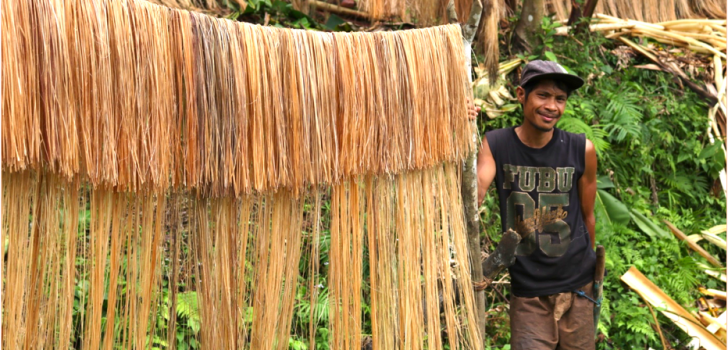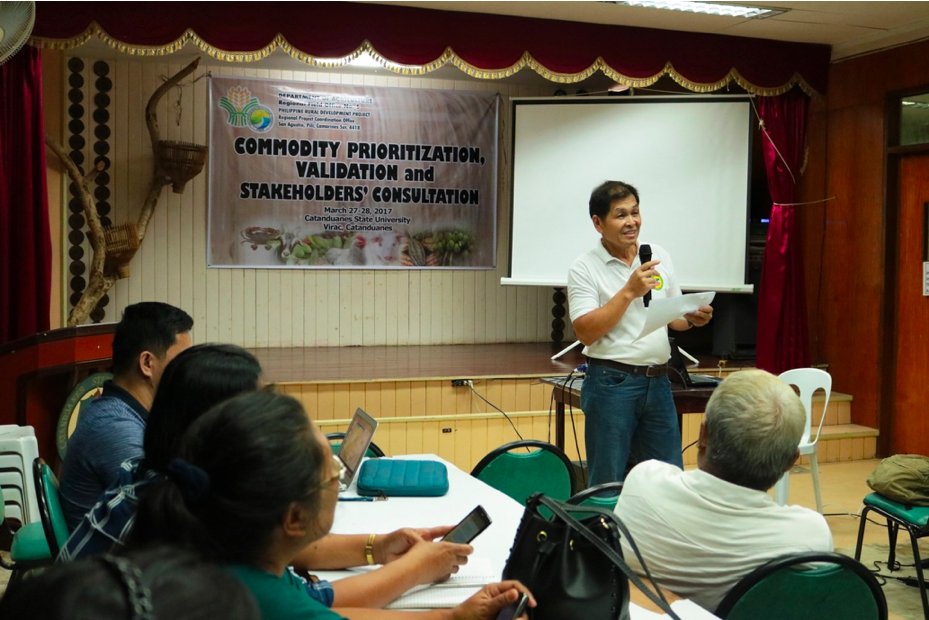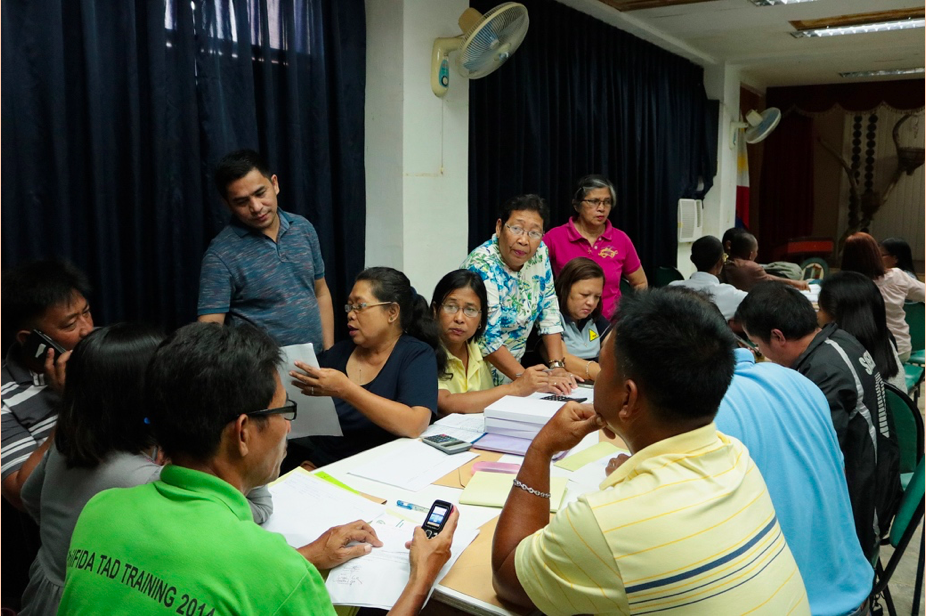 Khurt Tuscano, a 25-year old abaca farmer from Bato, Catanduanes, said he left his job in Metro Manila and returned to the province, because he realized that he can earn more from selling abaca fiber. (Photo by Ana Francesca Chavez, DA-PRDP South Luzon PSO InfoACE Unit)
Khurt Tuscano, a 25-year old abaca farmer from Bato, Catanduanes, said he left his job in Metro Manila and returned to the province, because he realized that he can earn more from selling abaca fiber. (Photo by Ana Francesca Chavez, DA-PRDP South Luzon PSO InfoACE Unit) PRDP helps shape the future of Catanduanes abaca
Finding a better job will no longer be a reason for residents to leave when opportunities are already present in their hometown.
According to Khurt Tuscano, a 25-year old abaca farmer from Bato, Catanduanes, he left his job in Metro Manila and returned to the province, because he realized that he can earn more by selling abaca fiber.
Based on the Provincial Commodity Investment Plan (PCIP) of Catanduanes, abaca fiber is the most prominent cash crop of the province, which is dubbed as the country’s “abaca county.” According to the same source, Catanduanes is the highest producer of abaca fiber in the Bicol Region and in the country taking up 39.2 percent and 41.7 percent of the total production, respectively.
Catanduanes, however, is one of the top 20 provinces identified by the Center for Environmental Geomatics-Manila Observatory to be highly at risk to the occurrence of typhoons. On December 25 last year, the province was severely hit by Typhoon Nina, which left abaca plantations damaged in the towns of Baras, Bato, San Miguel, and Virac.
The P25.45 million-worth Abaca Fiber Processing and Trading enterprise development (I-REAP) subproject in Virac and Construction of Main and Satellite Warehouse Building infrastructure development (I-BUILD) subproject in Bato are the ongoing PRDP subprojects in Catanduanes that support the development of the abaca value chain.
In addition to the said subprojects, the Department of Agriculture (DA) Secretary Emmanuel Piñol pledged for the rehabilitation of abaca plantations in Catanduanes through the PRDP. While it takes about two years for the damaged plantations to recover, the PRDP South Luzon Project Support Office (PSO) and the Bicol Regional Project Coordination Office (RPCO) take the lead in identifying alternative livelihood opportunities for the affected families in the province.
On March 27–29, the local and national level planning (I-PLAN) component of the PSO and the RPCO together with the Catanduanes Project Management and Implementation Unit (PPMIU) convened the representatives of the municipal local government units (LGUs) for the “Commodity Prioritization, Validation, and Stakeholders’ Consultation.”

Catanduanes PPMIU Focal Person Romeo Aquino leads the introduction of workshop participants. (Photo by Ana Francesca Chavez, DA-PRDP South Luzon PSO InfoACE Unit)
The said activity, which was attended by municipal agriculture officers, planning and development officers, and agricultural technologists, aimed to identify gaps in the abaca value chain and determine necessary interventions for the development of the abaca industry. Outputs from the activity will also serve as inputs for the business plans to be developed by the I-REAP component for the creation of alternative livelihood that will support the typhoon-affected abaca famers.
Aside from abaca, other priority commodities identified by the LGUs were native chicken, swine, mangrove crablet, organic rice, virgin coconut oil, seaweeds, and dairy cattle.
Virac Mayor Samuel Laynes, who also attended one of the workshops, encouraged the participants to propose alternative livelihood programs that are sustainable so that they will benefit the community in the long term.

Representatives of the different municipal local government units in Catanduanes participate in the workshop of the local and national level planning (I-PLAN) component of PRDP to identify gaps in the abaca value chain and determine the needed interventions. (Photo by Ana Francesca Chavez, DA-PRDP South Luzon PSO InfoACE Unit)
The abovementioned approved I-BUILD and I-REAP subprojects in Catanduanes are expected to benefit at least 3,483 abaca famer-members of the proponent group Pinoy Lingap Damayan Credit Cooperative. The average monthly farm income of the said farmers is projected to increase by 57 percent from P4,260 to P6,672 by the end of the subproject intervention.
PRDP is a six-year project intervention designed to establish the government platform for a modern, climate-smart, and market-oriented agri-fishery sector. ### (Gumamela Celes Bejarin, DA-PRDP South Luzon PSO InfoACE Unit)
